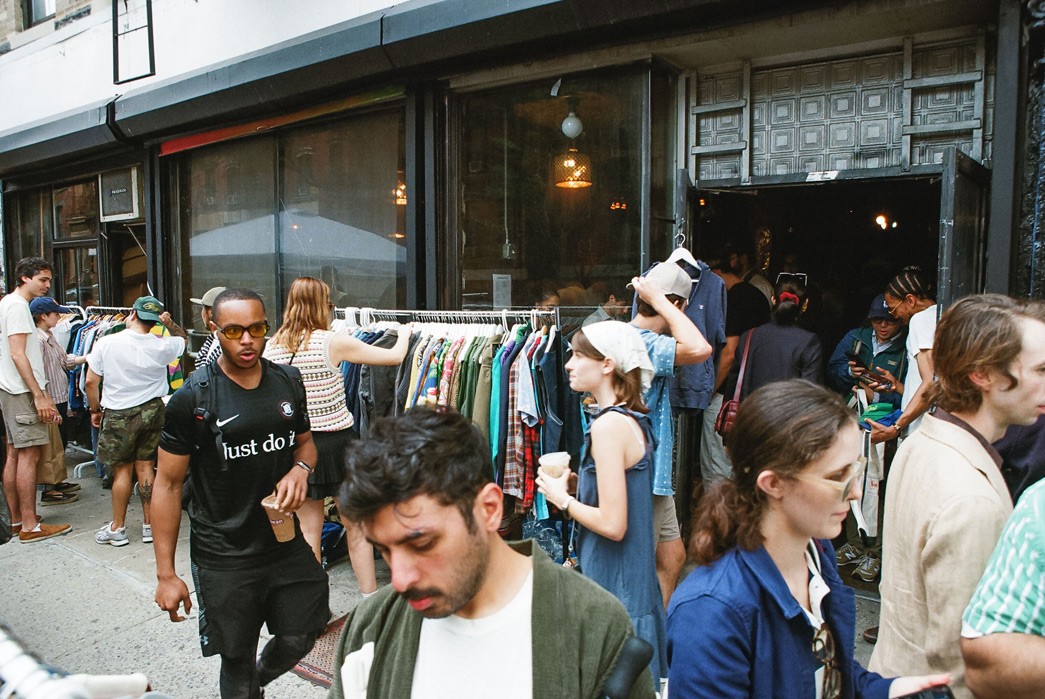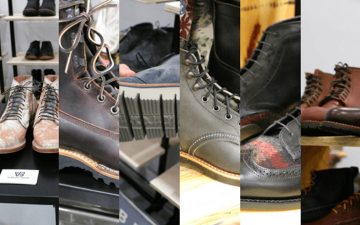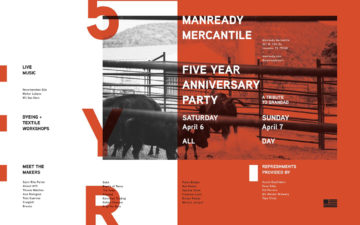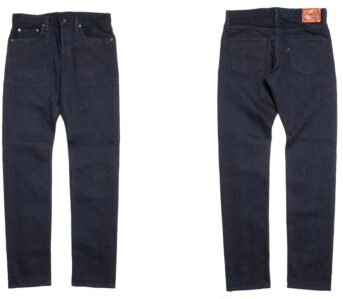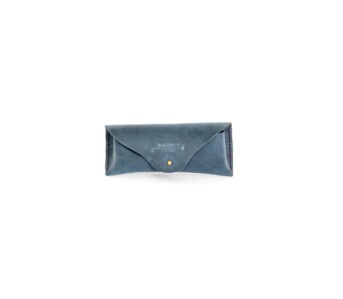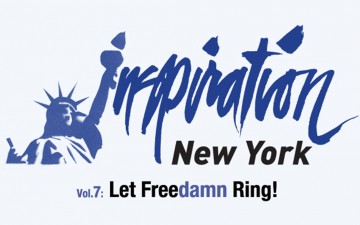One weekend each month, the sidewalk is abuzz on a short stretch of East 3rd St, just off the corner of 1st Ave, in New York’s East Village. Crowds and commotion are commonplace in the Big Apple but this one stands apart for the sheer density of glorious fits to behold. Rarely, outside of Fashion Week, will you find so many fashion enthusiasts showing out in one location. Unlike fashion week, these crowds aren’t gathered to worship some designer. They’re here to see each other and admire the collections of vintage clothing and original artwork each attendee has assembled -ideally picking up a few pieces in the process. This congregation goes by the name Alfargo’s Marketplace, and it is a headliner of New York’s growing pop-up vintage scene.
Second-Hand City
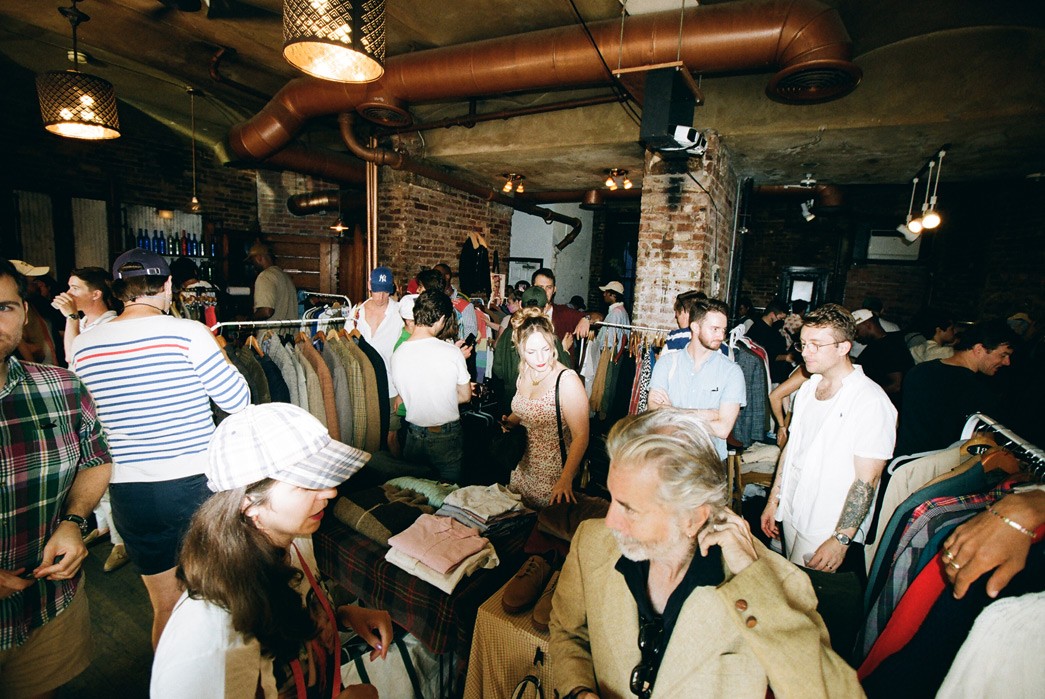
New York has been a destination for thrift shops and vintage markets since at least the 1950s. The thriving second-hand industry has always gone part and parcel with the city’s art scene. Generations of broke artists who could only afford to shop second-hand made the used garments look cool, leading those who could afford new to shop second-hand anyway. With so many wealthy, stylish people and the fashion brands that they admire calling New York home, the second-hand industry is fed by a steady stream of discarded treasures. This is why brick-and-mortar vintage shops litter all five boroughs, especially Manhattan and Brooklyn.
Living alongside these storefronts is a long tradition of flea markets selling almost anything imaginable at second hand. Flea markets also host scores of artists trying to make a name for themselves, build a brand, or just make a few bucks off of a hobby. These spaces are often bustling, especially since the hipster movement of the 2000s exposed them to the general public. All manner of wonderful products can be found, from furniture and artwork to clothing and records. However, it requires a certain determination to weather the tempest of sights and sounds at good New York flea markets. Gold can certainly be struck but it is all business finding it.
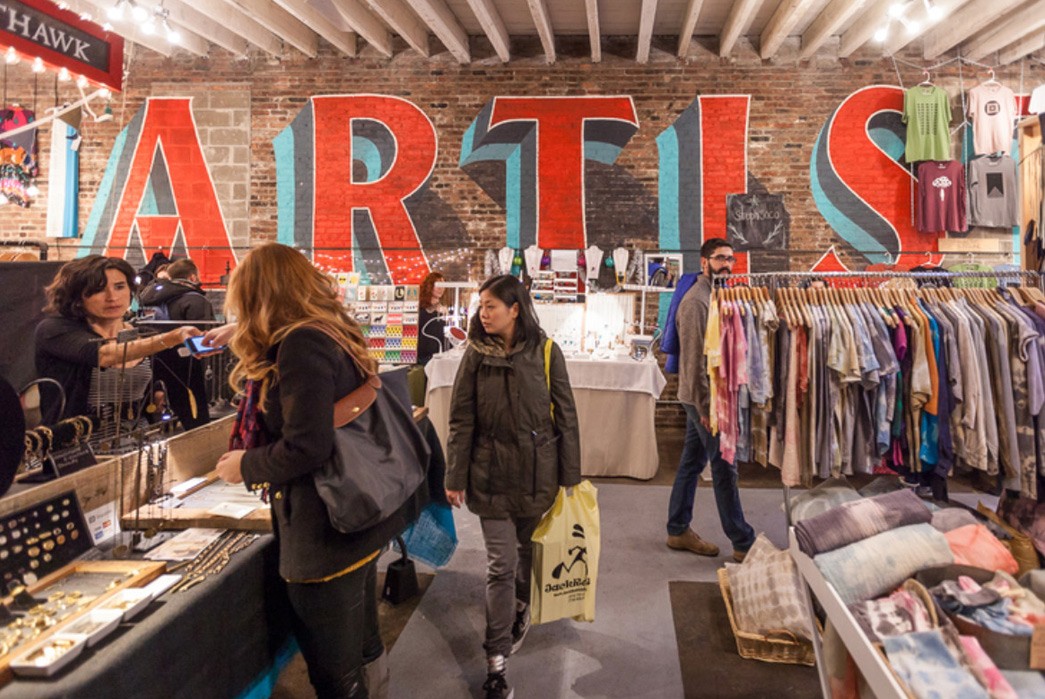
Artists & Fleas is a typical New York thrift shop in Williamsburg, BK. Image via Artists & Fleas.
With such a vibrant second-hand culture cohabitating with fashion and art culture to rival anywhere in the world, New York became a focal point for the digital vintage scene that came up in the 2010s. Social media, traditional media, blogs, and startup digital media aggregated around buying, selling, and – most importantly – talking about vintage fashion. As the original resale platform, eBay has always been the biggest platform for moving vintage merchandise, but other niche sites came along in the 2010s. Grailed, Depop, the RealReal, Threadup, and a fleet of sites and apps were created specifically to host the second-hand fashion community. Social platforms like Instagram, Tumblr, and Reddit became fertile ground for enthusiasts to grow interconnecting communities dedicated to every subset of fashion imaginable, with vintage and hype resale being to of the largest.
In an ironic twist so characteristic of the 2010s, the real-life vintage and fashion scenes in New York gradually died off. As city residents joined the worldwide digital communities, they stopped engaging in local discord beyond immediate friends and colleagues. The fashion industry itself and the media industry that covered it became an incubator for micro-communities of mutual interest, as did other creative professional fields. While these individuals and cliques were all interacting online, with a rare few even attaining “influencer” status, they rarely met up in real life. Fashion and vintage culture grew steadily more digital until 2020 when all of our social lives became almost entirely digital.
From Isolation to IRL
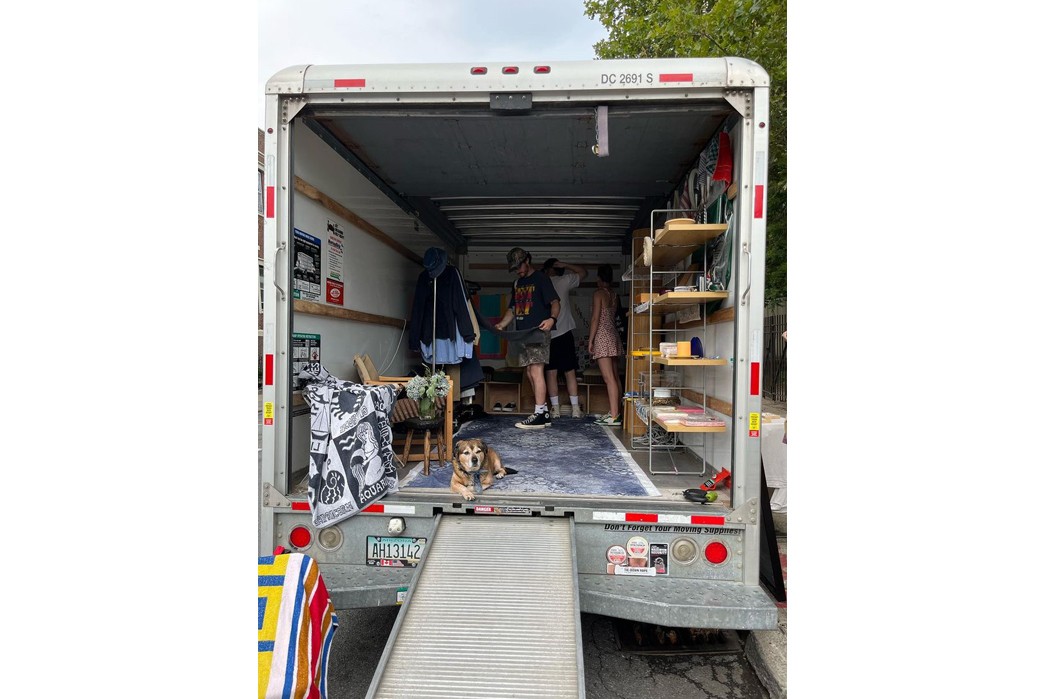
The U-Mall merchandised to look like an apartment, complete with dog Ernie who actually belongs to former Heddels writer, Reed Nelson. Image via Gerald Ortiz.
Peak digital life came at an opportune time, as it turned out. When public life shut down and we all went into isolation, remaining there in varying degrees through most of 2020 and 2021, we all had our digital social lives to turn to. It was almost as if we had spent a decade preparing for just such an occurrence. While this approximation of society worked for a short period of time, depending on it entirely enlightened many of us to the fact that we were missing the kind of IRL social scenes that existed before social media. The vast and vibrant vintage fashion culture of New York reacted by emerging from its digital cocoons in 2022 and taking to the streets.
To help me understand the origins of New York’s post-digital transformation, I talked to GQ Style Commerce Writer and vintage connoisseur Gerald Ortiz. He explained that vintage clothes have never been more popular. A whole new generation is getting into thrifting and buying used because it saves money and provides an opportunity to find unique pieces. Vintage enthusiasts are congregating in New York’s established vintage shops as well as creating their own pop-up markets. “Vintage clothing markets are certainly great for people who are tired of scrolling through Depop and Etsy.” He explained when asked about the move away from digital. “They’re also great for meeting other stylish people with similar interests.”
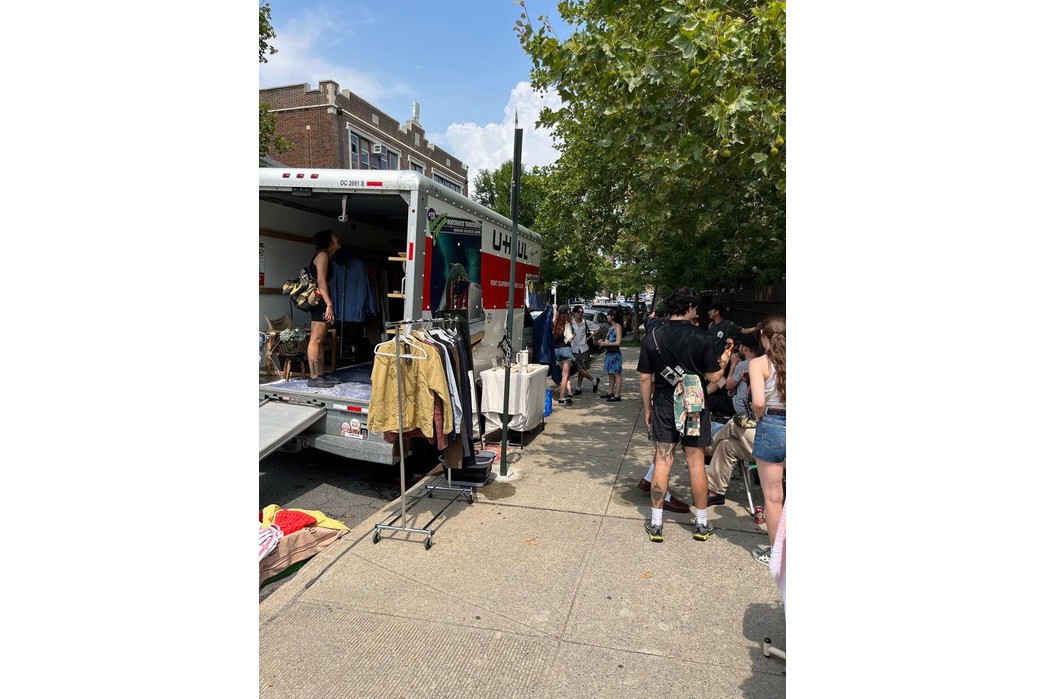
A scene gathered around the U-Mall. Image via Gerald Ortiz.
Ortiz is not only a witness to this emerging trend, he is a participant in his venture U-Mall. Like so many others in the fashion and editorial profession, Oritz had accumulated more stylish pieces than he knew what to do with. “I’ve been thrifting and buying vintage ever since college and somewhere along the way figured I could sell the clothes I’d find. That never really came to fruition,” He noted with a laugh. The idea came to him in late 2021 to rent a UHaul truck filled with used clothes and furniture, as well as some original pieces from artist friends, all for sale. “I like the idea of a store that could park anywhere and never be in the same exact spot,” he elaborated. Otiz’s friend Geoff Snack came up with the concept of merchandising the truck like an apartment, emphasizing a welcoming vibe.
Along with being a business venture, not to mention an exceptional pun, U-Mall is also a community space. “I knew I had plenty of friends who also had too many clothes and needed an excuse to downsize,” Ortiz explained. “So U-Mall became an opportunity for them.” Highlighting his friends who were collectors, artists, and makers that didn’t have a physical space of their own was a way for Ortiz to make U-Mall a unique space. Digital shopping doesn’t provide the opportunity to meet the seller or creator of the item you’re buying and pick their brain. A brilliantly decked-out rental truck parked somewhere on the streets of New York, on the other hand, does.
Sidewalk Haberdashery
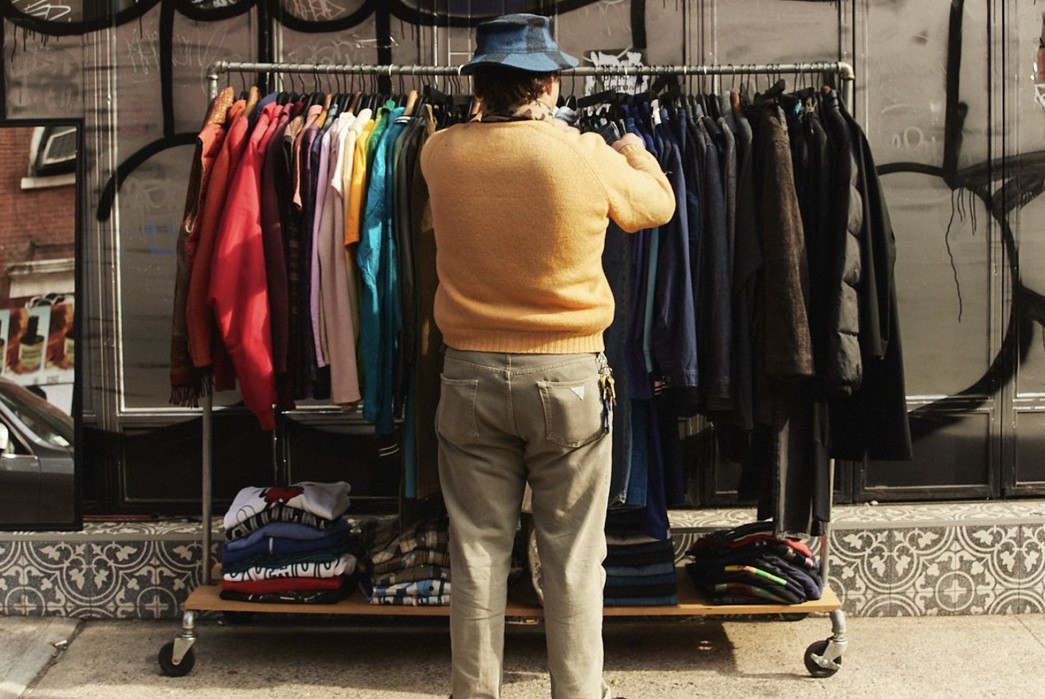
Chad Senzel’s Street Rack on the streets of NYC. Image via Chad Senzel.
Most pop-up vintage sales are not as complex of an operation as U-Mall. Some sellers like Chad Senzel, for example, just use a good old-fashioned rolling rack. The city has a long-standing tradition of sidewalk vendors and street rack sales, both legal and unlicensed. Historically, most of these sellers are pushing counterfeit, knockoff, or cheap merchandise targeted at tourists. Senzel took this guerrilla business model and applied it to his expertly curated vintage collection. Near limitless mobility and almost no
overhead makes Senzel’s Street Rack an ideal real-world alternative to selling through established digital channels.
Street Rack also stands apart from the slew of old-school New York street vendors because of Senzel’s integration with his established digital operation. He sold vintage menswear on eBay, Grailed, and other sites for years before establishing a dedicated social media account to show off his finest goods. Followers began to accumulate through 2018 and 2019 as Senzel continued to sell through digital channels and at the odd flea market. Then the pandemic shut down all the physical vintage shops, flea markets, and street fairs. Senzel, like everybody else, moved exclusively online for a while.
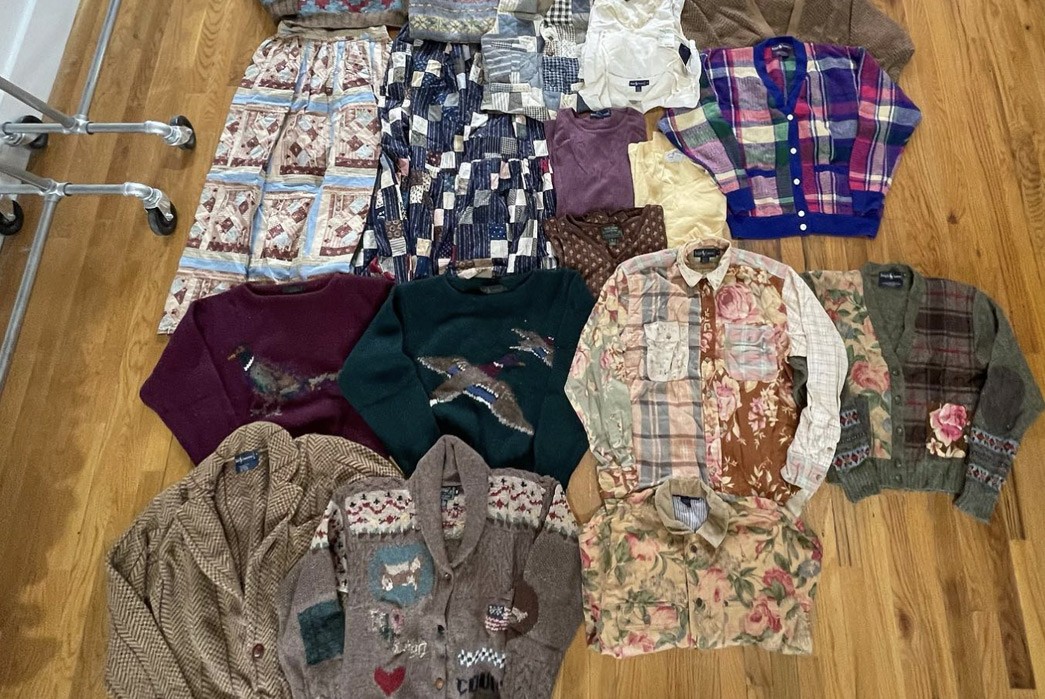
Chad Senzel’s collection of vintage Ralph Lauren. Image via Chad Senzel.
Then in the summer of 2021, the future of physical retail in New York — and everywhere else – looked uncertain. Senzel decided to set up his own real-world operation by piling as much of his top-tier merchandise onto an old rolling rack as he could fit and finding a spot to sell on the street – hence: Street Rack. Awareness of this DIY operation was built up through Senzel’s social media and has snowballed through those channels ever since. He now keeps a loft space to shop by appointment only but a majority of his vintage clothing business is done through sidewalk haberdashery.
Meeting People Is Easy
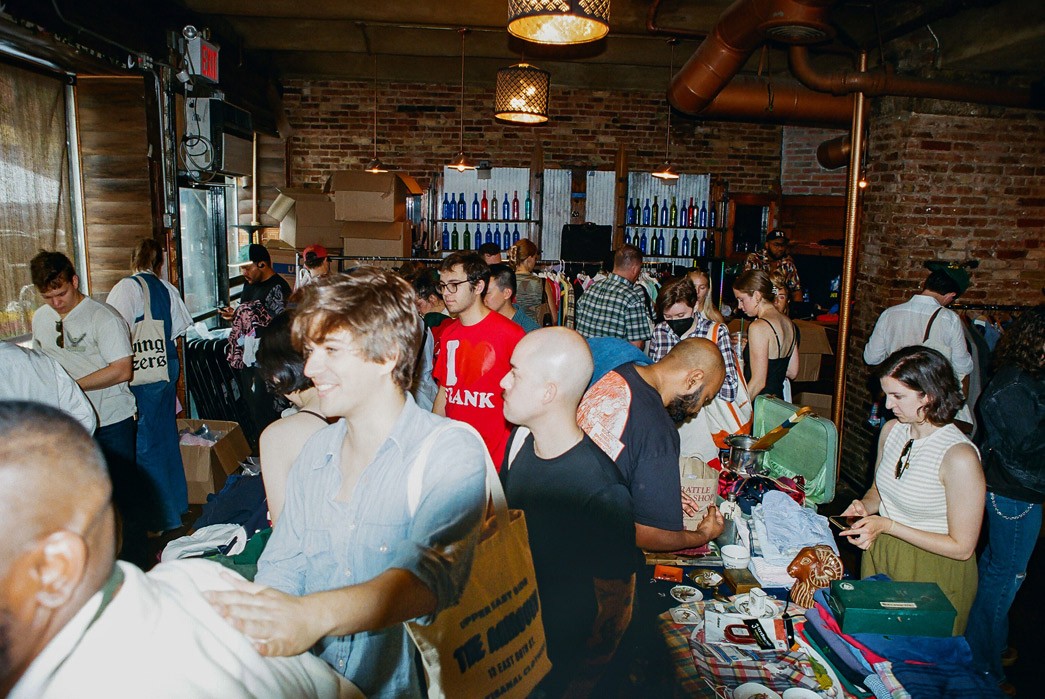
The crowd abuzz inside Alfargo’s Marketplace. Image via Zane Gan.
The single greatest benefit to checking out Street Rack is that Senzel is there to give you all the information you could possibly want on any piece he has to offer. If you allow him to, he will tangent into history and hot takes on the brand, designer, or social history of said piece. The man is encyclopedic with his knowledge of menswear because he is so very passionate about it. Experiencing that visceral passion first hand is the element that digital selling platforms and social channels have always been missing and can never replicate.
You can find that same passion in all the DIY vintage sellers, as well as many of the patrons who frequent the pop-up vintage markets. These fashion enthusiasts aren’t new to the city, they’ve always been there. You could find them shopping in one of the many vintage shops throughout the city or at established flea markets like The Parking Lot Bazar on 26th St, or Artists & Fleas on N. 7th in Williamsburg, BK, yet these places were not social scenes. For a decade, all that social energy was directed online and the real world spaces were taken for granted until they were no longer there.
Back in the fall of 2021, Stephon Carson recognized the need for a real world space to host the vintage menswear community thriving in New York. His dapper crew, known as Team Cozy Boys, and his job at esteemed menswear boutique The Armoury kept him plugged into a network of style fanatics that most New Yorkers just didn’t have access to. He knew the comradery and conversation that existed within his social circle should be open to everyone who was interested in men’s style and vintage. What better way to draw mens style and vintage clothing fans to a central location than by selling some top quality goods?
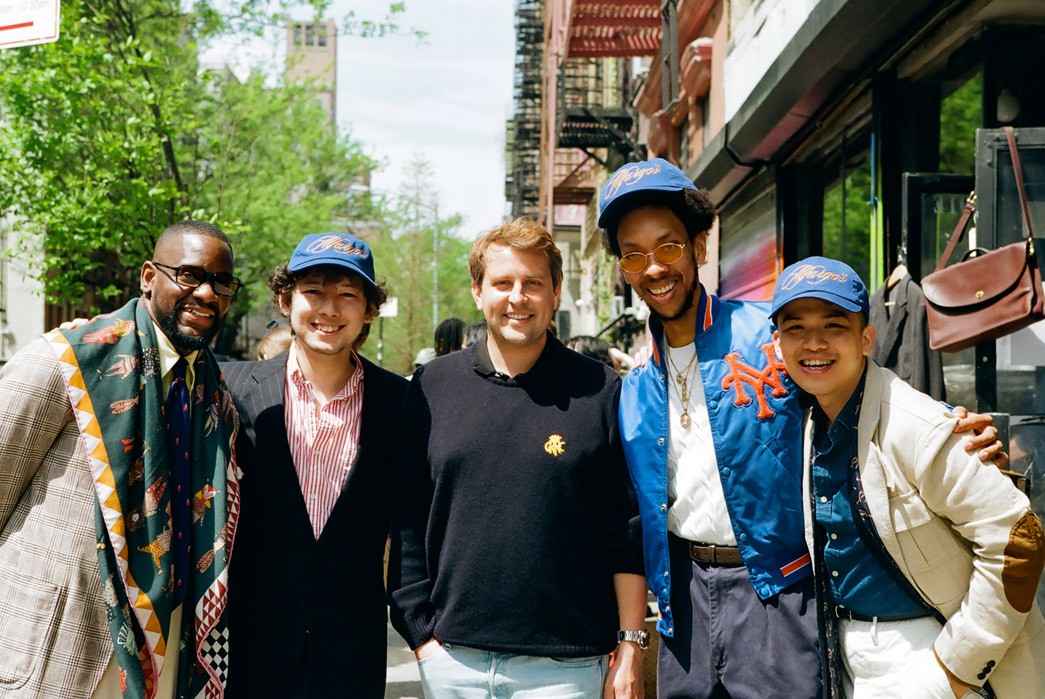
The guys behind Alfargo’s Marketplace. From Left to Right: Stephon Carson, Nick, Jack Carlson of Rowing Blazers, Elias, and Zane. Image via Zane Gan.
Carson, along with his friends Elias, Zane, and Nick, run Alfargo’s Marketplace, a so- called “Menswear Garage Sale” that is quickly becoming one of the hottest scenes in New York among people who care about style. Operating for two days each month, the pop-up occupies two floors of retail space in the East Village, as well as the entire sidewalk space outside. The operation has grown significantly since launching in September of 2021 thanks to deft social media marketing and significant word of mouth.
The fellas behind Alfargo’s Marketplace spoke to me about how it operates and the social scene that has grown up around it. “Here, you’re getting everything,” Carson elaborated about the attendees and vendors that make up Alfargo’s. “You’re getting the people that sell on eBay, Poshmark, all these places, and then you get to meet the people on Instagram, Reddit, so it’s a great community here.” That word community comes up again and again in our conversion when describing the marketplace. It is a business for sure, but the guys behind it aren’t in it for money. There is a genuine passion coming from all four of them that is infections.
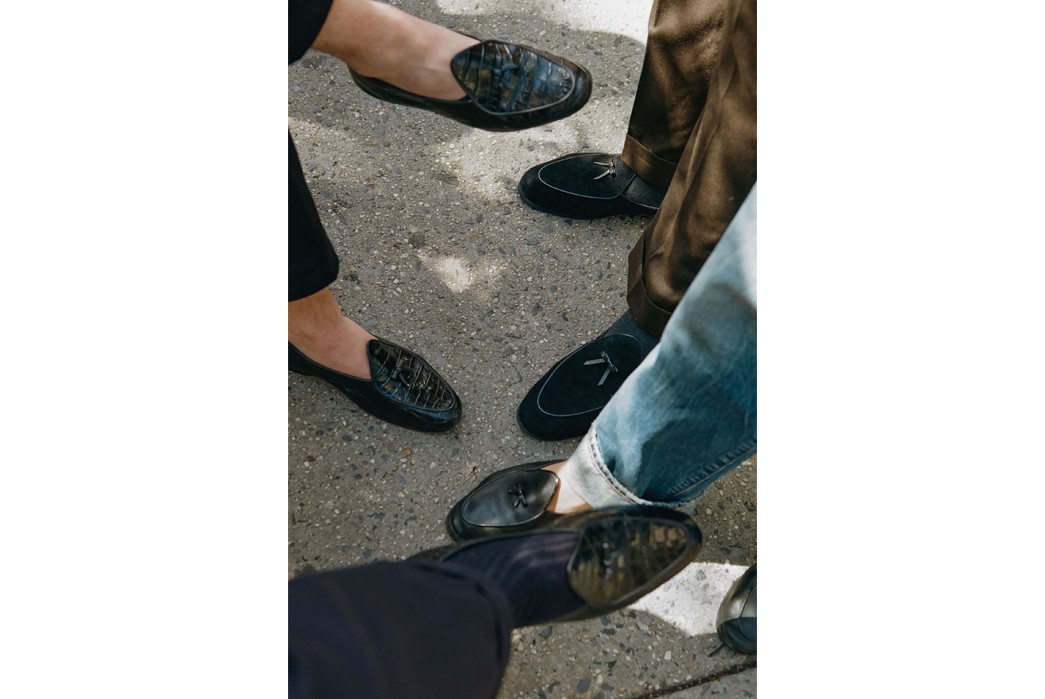
Belgian Loafers are a common sight at Alfargo’s Marketplace. Image via Zane Gan.
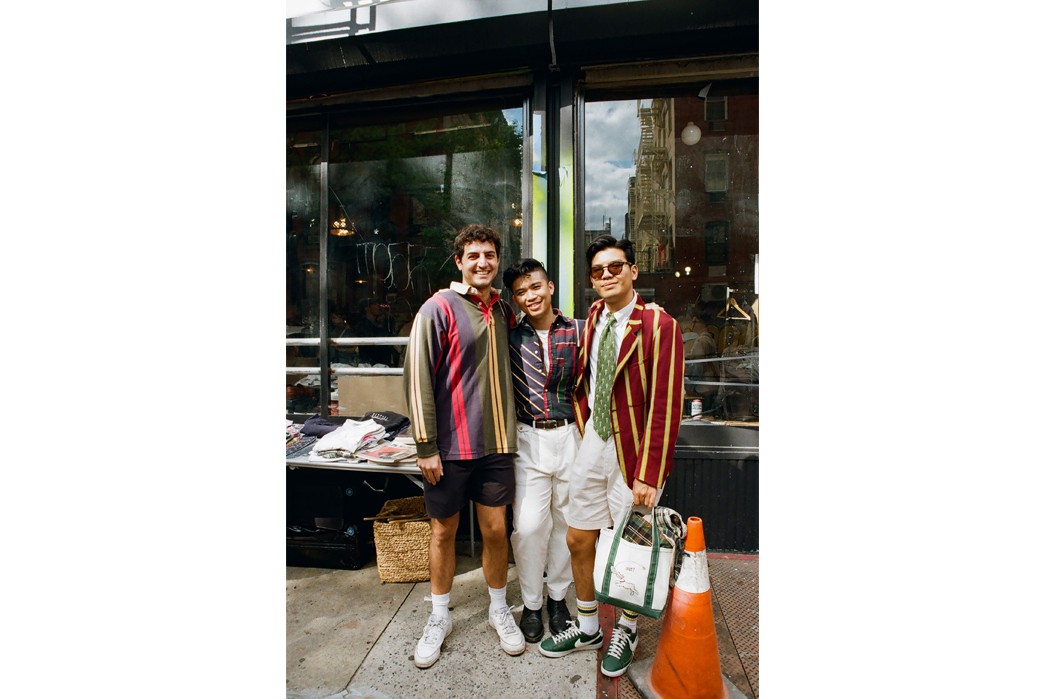
Three well dressed attendees of Alfargo’s Marketplace. Image via Zane Gan.
Carson pointed out that shopping for vintage clothing is always best done in person because you feel the item, try it on, and talk to the seller. Alfargo’s takes the experience a step further by creating an immersive environment that draws people in with conversation and interaction. People hear about Alfargo’s through friends and through social media, or they just see a crowd on the street so they come in. They start asking questions and learning about the pieces for sale. Whether they buy or not, they come away with a lesson.
“My favorite aspect of the market is that clothes unify us all.” Nick offered, “You got doctors, lawyers, people who are fashion heavy hitters. You got writers, you got musicians, people from all walks of life coming by and getting together.” That kind of transcendent unity is sadly lacking in the world we currently live in, so finding a commonality in clothing is a beautiful thing. Enthusiastic chatter, laughter, and a resident DJ create a welcoming scene for all. As Zane elaborated, “It makes clothes accessible because some people can be standoffish and gatekeep certain elements of the vintage scene, but we’re very inclusive.”
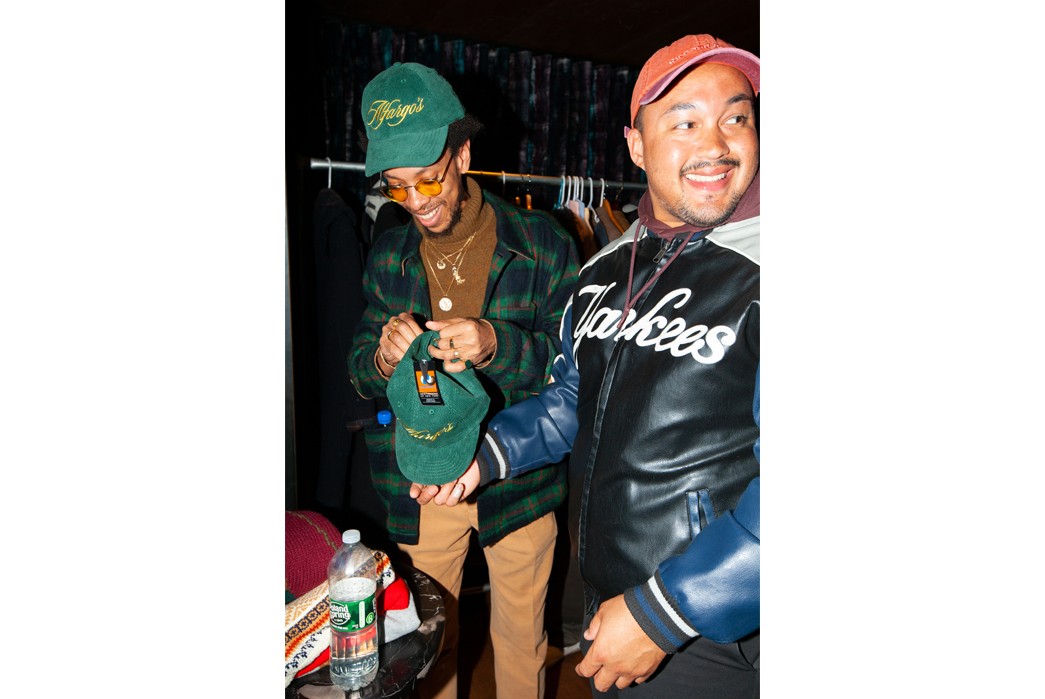
Elias selling a much sought-after Alfargo’s hat to a fortunate patron. Image via Zane Gan.
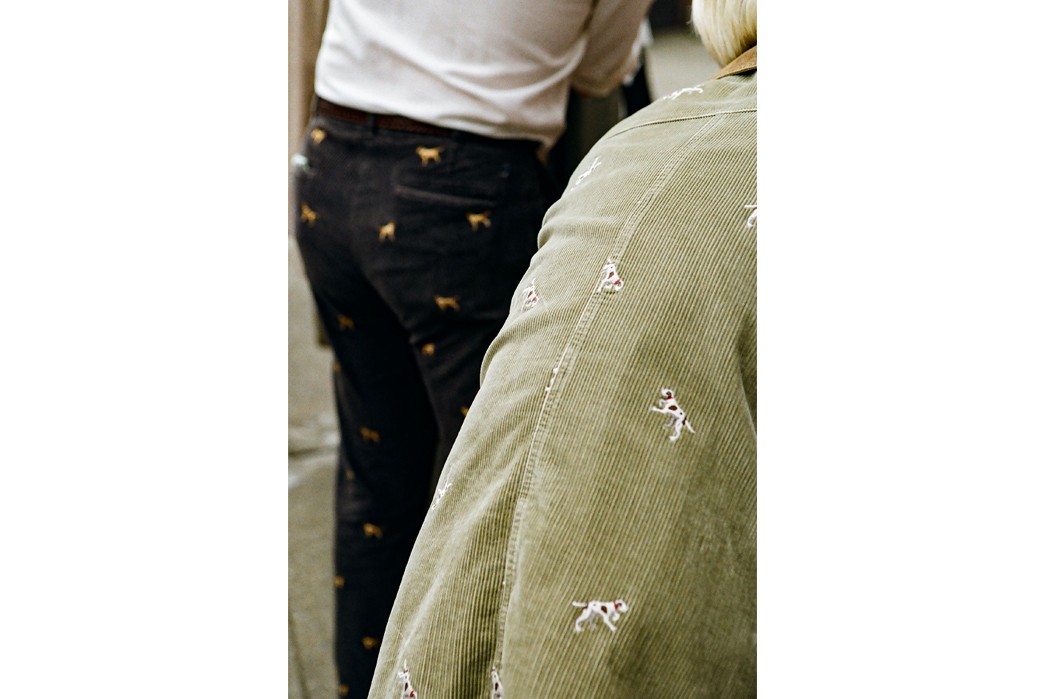
Every Alfargo’s Marketplace is a tapestry of interesting textures. Image via Zane Gan.
Zane is the resident photographer behind all those fit pics on Alfargo’s Instagram. He explained that, “It becomes like a social event. People come and do all their shopping, get what they need, and then mingle. Talk about their purchases, how to wear certain things, and how to style it.” Having a knowledgeable seller on hand, as well as an engaged community around you makes shopping an entirely different experience. “Getting everyone’s opinion,” Zane added, “Everyone complimenting each other, it’s a whole vibe, really good energy.” As a former shopper, it was that welcoming vibe – along with his photography skills – that brought Zane into the fold.
Those fit pics from Zane and the many other photographers who attend Alfargo’s have made the vintage pop-up a place to see and be seen, then posted. The good energy buzzes as shoppers and observers compliment each other and draw inspiration from each other. A single outfit seen on a total stranger can sell you on a single item of clothing, and it’s more than likely you’ll be able to find it at Alfargo’s. Even if you don’t pick up anything new, the experience alone is worth it. As Elias exclaimed, “Your weekend can’t get better than getting a fit pick taken and getting a compliment.”
Catch Us While You Can
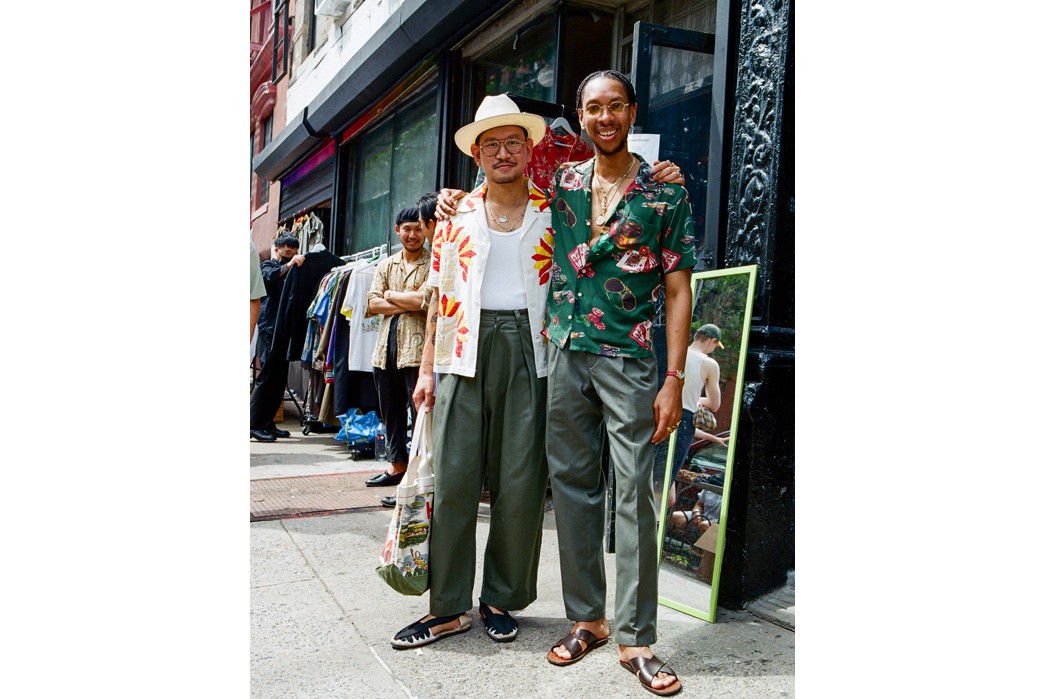
So many fit pics to be had at Alfargo’s Marketplace. Image via Zane Gan.
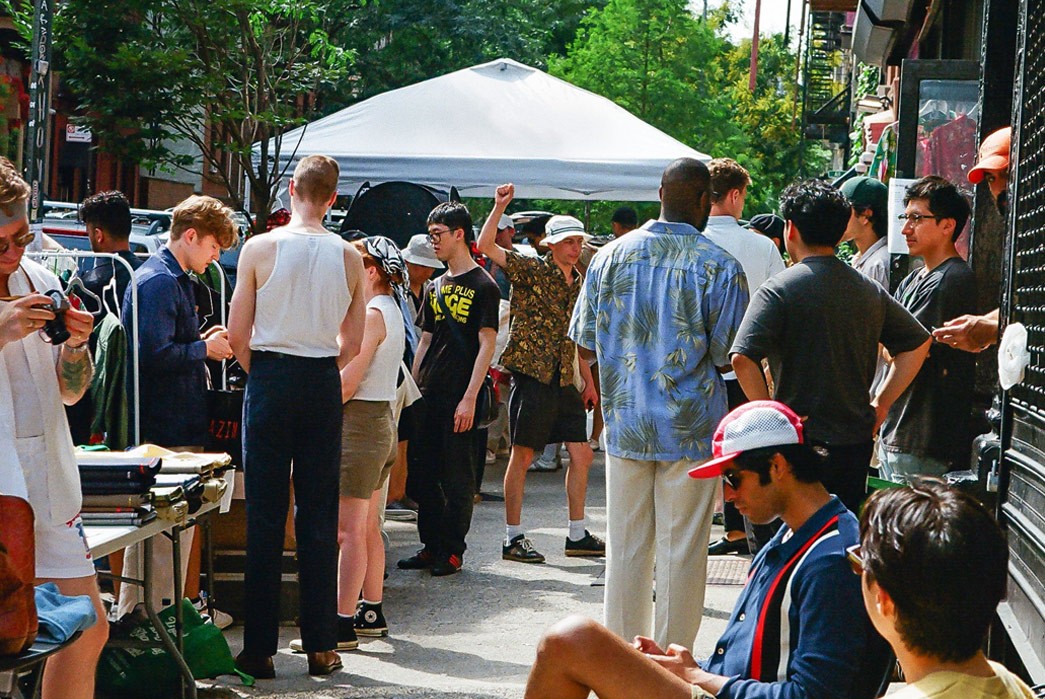
A sidewalk full of clothes and conversation in New York’s East Village. Image via Zane Gan.
When I asked the guys running Alfargo’s where they see it in a year, two years, five years, they didn’t have a concrete vision. Their “Menswear Garage Sale” has already become a legitimate social scene through purely organic growth and they don’t intend to interfere with that process. Maybe a brick-and-mortar operation could be in the future but Carson is enjoying the pop-up operation too much to abandon it anytime soon. “We disappear for a little bit then we’re back. I love that whole mystique about it.”
Social scenes like the current vintage pop-up shops in New York are inherently fleeting. They evolve, splinter, and eventually fade away. Demand for U-Mall, Street Rack, and Alfargo’s Market peaked because of the pandemic and collective digital burnout. Most people don’t want to abandon their digital lives entirely but they need some IRL stimulation to balance things out. Ideally, social media and digital spaces like forums, blogs, and editorial should cultivate organic social interaction, not replace it. Digital spaces offer a near-limitless source of information and idea exchange on style and vintage clothing. But those are still very much tangible concepts that are best served by speaking to other people face to face.
Ortiz cleverly observed that “In a way, it feels similar to how more people are trying to get off dating apps and find romance IRL.” There will always be a place for eBay, Grailed, local vintage shops, and weekend flea markets. For the foreseeable future, Instagram and Reddit will remain a go-to source for a style fix that lives in your pocket. It is just too easy to look for love on Bumble and Tinder, despite how futile you know it to be. But just as nothing will ever replace the sensation felt when locking eyes with a stranger across the bar, there is no substitute for the comradery found at New York’s pop-up vintage markets.

